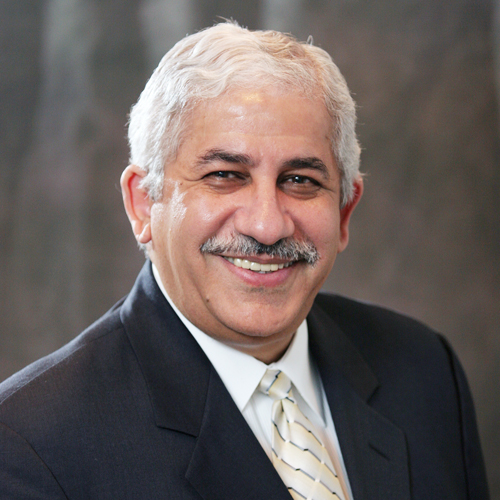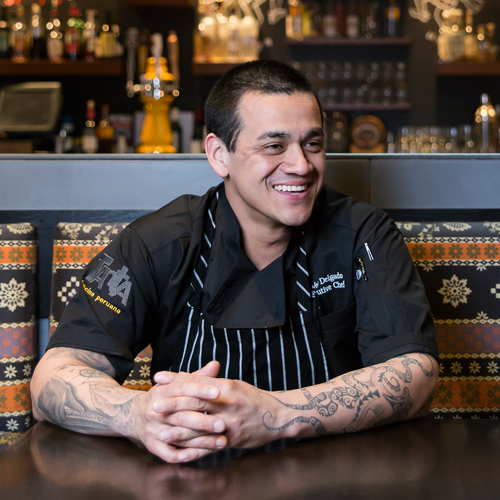When I started college, I chose biomedical engineering as my major, with the goal of attending medical school. Then, during my freshman year at Duke University, my father was diagnosed with terminal brain cancer and my grandfather suffered multiple strokes and passed away. After spending so much time in hospitals, I ultimately decided a medical career wasn’t for me.
After my sophomore year at Duke, I attended a summer program at Oxford and studied comparative tort law, which sparked my interest in a career in law. The father of one of my best childhood friends was a well-known patent attorney, and he encouraged me to consider patent law. I have always enjoyed learning about new technology, and intellectual property law allowed me to leverage my degree in engineering into a career in law.
I received my JD degree from the University of Chicago Law School. I was fortunate that intellectual property law was a hot area when I graduated, which afforded me a range of opportunities right in the Windy City.
I started my career in private practice and worked for two Chicago law firms, gaining valuable experience in a broad range of intellectual property matters, with a focus on patent litigation. My wife, Susan, is also an attorney. When our first child was born, we were both working in law firms as litigators. We soon discovered that it was increasingly challenging to balance family with our litigation work. Susan decided to go in-house, which I could see provided her with a better work/life balance.
Encouraged by my wife’s successful transition, in 2000, I went in-house as well, as intellectual property counsel for Videojet Technologies, a company with approximately $400 million in annual revenue. In 2004, I joined Pactiv Corporation, a company with approximately $4 billion in annual revenue. I was with Pactiv until 2007, when I joined RR Donnelley, a company with over $11 billion in annual revenue. The breadth of my responsibilities at these three companies was similar, but the scale kept growing.
As vice president and chief intellectual property counsel at RR Donnelley, I am responsible for the entire range of intellectual property issues—patents, trademarks, copyrights, trade secrets, clearance analyses for new product/service development, and strategic management of the company’s global intellectual property portfolio. I’m also in charge of licensing—enforcing our intellectual property and ensuring the company receives a fair return on our research and development investments.
In addition, I oversee all intellectual property litigation involving the company. My team also supports the mergers and acquisitions function of the company, reviewing intellectual property from the risk and valuation perspective. At the moment, the company is in the middle of a “double spin,” which means that RR Donnelley is splitting into three public companies. We are in the process of dividing up the global patent and trademark portfolios between the three companies to make sure each company has the intellectual property it needs to operate independently going forward.
“What I hope to impart to my students is an appreciation for the value of intellectual property and the importance of having a legal system that provides an incentive
to innovate.”
Paul Rodriguez
What sets RR Donnelley apart is the breadth of our services, technological capabilities, and ability to respond to customers’ needs. We are able to develop and integrate new technology ourselves, faster than if we solely depended on a third party for a solution. We also have an extensive global footprint—with more than 500 operations. I’m particularly proud that RR Donnelley has never been found to infringe on another party’s intellectual property. We have robust clearance processes and we vigorously defend ourselves against claims of infringement. In addition, RR Donnelley has been recognized on the Ocean Tomo 300 Patent index six times for its patent portfolio.
The intellectual property practice has changed in many ways since I entered the field. For example, all the discovery material used to be on paper—boxes and boxes of paper would be produced in warehouses during patent litigation cases. Now, the discovery in intellectual property litigation is all electronic. Similarly, there is now so much more information that’s readily available. When I first started out, there were no user-friendly electronic databases for conducting patent clearances. You had to conduct patent searches manually. Most of this work was outsourced to specialists that worked near the US Patent and Trademark Office. Now, robust, user-friendly, proprietary database services are available so that we can conduct patent clearances in-house. It’s more affordable and more effective since we know our business and our technology better than any outside firm. Another development is that there are now patent-holding companies called nonpracticing entities whose entire business is to acquire patents and then enforce them, which has resulted in more patent infringement lawsuits than ever before.
There are only four people on RR Donnelley’s legal department IP team. We use outside counsel extensively to assist with patent and trademark prosecution, as well as IP litigation. I would describe my management style as collaborative. I prefer face-to-face interactions whenever possible. Teamwork, clear communication and creative problem solving are essential. Since we’re such a small in-house IP team, we depend on our internal clients coming to us with their issues. It is critical to develop good relationships with our internal clients so that they view us as problem solvers and trust us to provide clear, actionable advice.
In addition to my day job, I am an adjunct professor at Northwestern University’s Pritzker School of Law. I teach in the Master of Science in Law program. It’s a new program for students pursuing careers in science, technology, or engineering. My students want to increase their legal knowledge and acumen but don’t necessarily want to become attorneys. One of my biggest challenges is preparing a course curriculum that is understandable to the entire class while also being challenging and interesting to those students who already have some intellectual property experience. The experience is rewarding, as I enjoy mentoring and providing career advice. I appreciate the students’ questions, which often make me look at things in a different way.
What I hope to impart to my students is an appreciation for the value of intellectual property and the importance of having a legal system that provides an incentive to innovate. The US judicial system rewards and protects those who are first to invent something of value.
The biggest influence on my life was my father, even though he passed away when I was 18. He was born in Bogotá, Colombia, and grew up in very modest circumstances. He came to the United States in his twenties to attend graduate school and received a PhD in economics. He was very disciplined and had a great work ethic. I saw where he started and what he achieved. Because of my father’s efforts, I was afforded opportunities that he never had. Because of that, I was motivated to work hard to take advantage of those opportunities. My father used to talk about all the things he would do when he retired, but unfortunately he never had the chance to reach retirement. When I think about him, I am reminded to work hard but also enjoy life along the way. And, because tomorrow isn’t promised to anyone, to take time every day to appreciate family and friends.”

